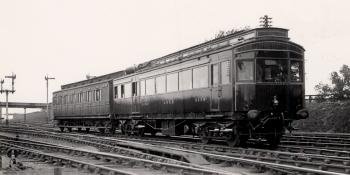At one time an important and profitable source of income for the railways, mail traffic has largely disappeared from the system. EVAN GREEN-HUGHES traces the history and decline of mail by rail.

Above: Rail Express Systems 47768 Resonant heads the 2225 St. Pancras-Newcastle TPO shortly before termination of the Travelling Post Office service on May 26 1995. Gordon Edgar Collection/Railphotoprints.uk
THE NEED FOR EFFECTIVE communication has led to many of the major technological advances in our history. Roads, steamships, the telegraph, radio and finally the internet have all been spurred on by our desire to pass messages from one person to another in the most efficient manner possible. Prior to the electronic age, the only practical method of longdistance communication was by the written word and by the physical transfer of the piece of paper it was written on.
How to move these pieces of paper, whether scrolls, parchments or letters, as fast as possible has been a problem that has occupied the authorities ever since our country was invaded by the Romans more than 2,000 years ago.
In those days a messenger or runner would take your mail but during the 18th and early 19th centuries, the best way of doing this was to send your l…





